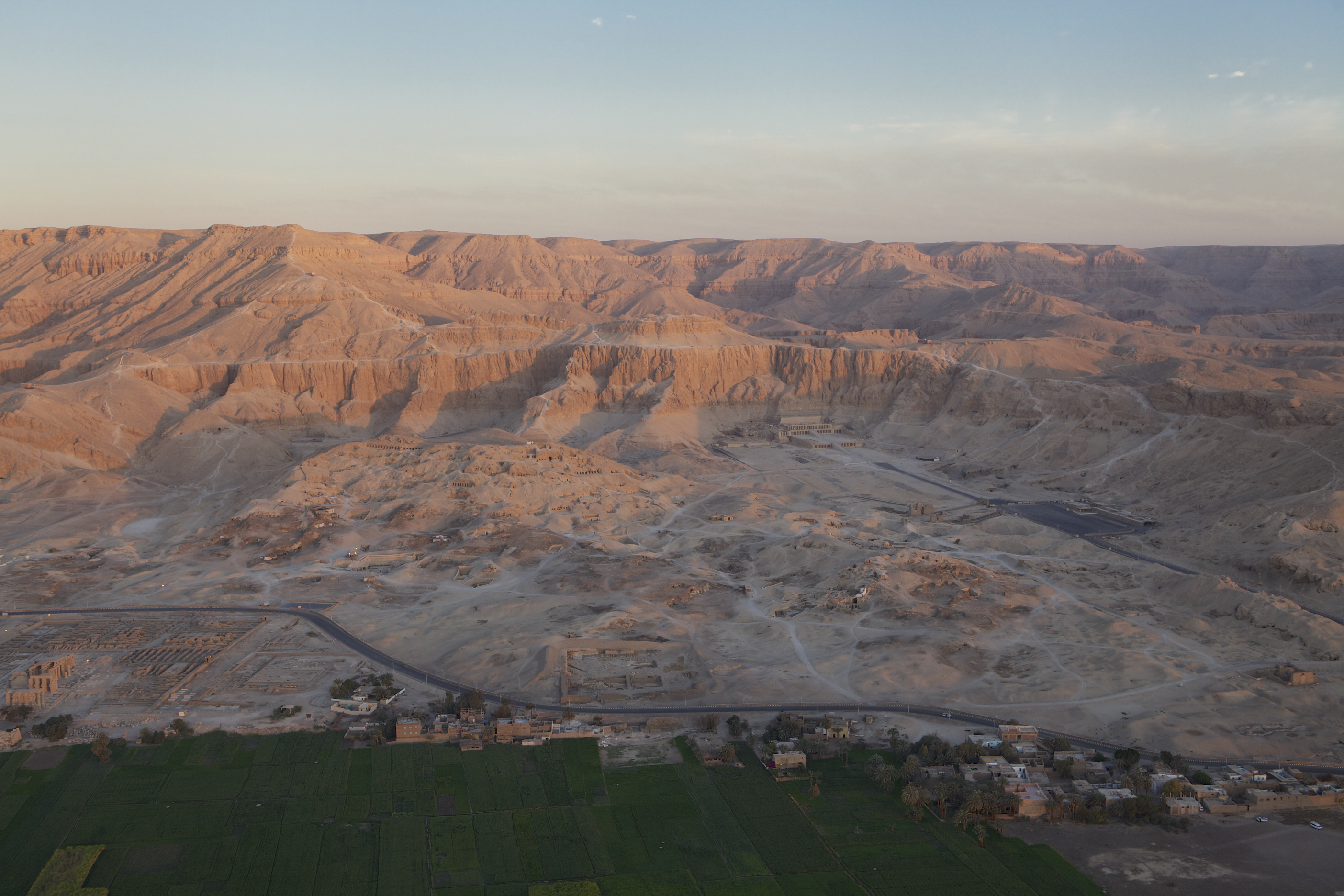Od Memfis do Teb

Nekropola tebańska
Naprzeciw starożytnego miasta Teby, na zachodnim brzegu Nilu rozciąga się rozległa nekropola tebańska, będąca miejscem pochówku tysięcy, a być może nawet milionów starożytnych Egipcjan poczynając od faraonów, których grobowce zostały wykute m.in. w skałach Doliny Królów, przez ministrów i urzędników, aż po zwykłych rzemieślników i rolników zamieszkujących Teby. Nekropola tebańska jest obecnie największym stanowiskiem archeologicznym na świecie, na którym trwają wykopaliska i badania starożytnych grobowców, świątyń oraz osad. I choć na nekropoli tebańskiej powstało wiele piramid, co prawda niewielkich rozmiarów, jednak nadal podtrzymujących dawne motywy, to jednak najsilniejsze powiązanie z tradycjami doby budowy piramid Starego Państwa zaobserwować można w ukształtowaniu naturalnego szczytu znanego jako el-Kurn, którego krawędzie wyraźnie przypominają krawędzie piramidy. Dlatego też świątynia Milionów Lat Hatszepsut w Deir el-Bahari czy królewskie grobowce w Dolinie Królów powstały niejako w ścianach samej piramidy.
Theban Necropolis
Opposite the ancient city of Thebes, on the west bank of the Nile, stretches the vast Theban necropolis, which is the burial place of thousands, perhaps even millions of ancient Egyptians, beginning with the Pharaohs whose tombs were carved, among others. in the rocks of the Valley of the Kings, by ministers and officials, to ordinary artisans and farmers living in Thebes. The Theban necropolis is currently the largest archaeological site in the world, excavating and exploring ancient tombs, temples and settlements. And although many pyramids were built in the Theban necropolis, although they were small, but still supporting the old motifs, the strongest connection with the traditions of the era of the construction of the Old Kingdom pyramids can be observed in the shape of the natural peak known as el-Kurn, whose edges clearly resemble the edges of the pyramid. Therefore, the Temple of Million of Years of Hatshepsut in Deir el-Bahari or the royal tombs in the Valley of the Kings were built in the walls of the pyramid itself.